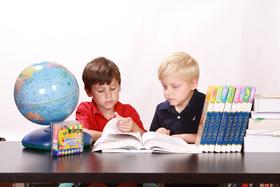For the 2025 school year, there are 3 public high schools serving 1,323 students in Wabasha County, MN.
The top ranked public high schools in Wabasha County, MN are Plainview-elgin-millville High School, Wabasha-kellogg Secondary and Lincoln Secondary. Overall testing rank is based on a school's combined math and reading proficiency test score ranking.
Wabasha County, MN public high schools have an average math proficiency score of 40% (versus the Minnesota public high school average of 36%), and reading proficiency score of 47% (versus the 51% statewide average). High schools in Wabasha County have an average ranking of 7/10, which is in the top 50% of Minnesota public high schools.
Wabasha County, MN public high school have a Graduation Rate of 93%, which is more than the Minnesota average of 83%.
The school with highest graduation rate is Plainview-elgin-millville High School, with ≥95% graduation rate. Read more about public school graduation rate statistics in Minnesota or national school graduation rate statistics.
Minority enrollment is 12% of the student body (majority Hispanic), which is less than the Minnesota public high school average of 37% (majority Hispanic and Black).
Best Public High Schools in Wabasha County (2025)
School
(Math and Reading Proficiency)
(Math and Reading Proficiency)
Location
Grades
Students
Rank: #11.
Plainview-elgin-millville High School
(Math: 40-44% | Reading: 60-64%)
Rank:
Rank:
7/
Top 50%10
500 W Broadway
Plainview, MN 55964
(507) 534-3128
Plainview, MN 55964
(507) 534-3128
Grades: 9-12
| 464 students
Rank: #22.
Wabasha-kellogg Secondary
(Math: 40-44% | Reading: 40-44%)
Rank:
Rank:
4/
Bottom 50%10
2113 Hiawatha Dr E
Wabasha, MN 55981
(651) 565-3559
Wabasha, MN 55981
(651) 565-3559
Grades: 7-12
| 263 students
Rank: #33.
Lincoln Secondary
(Math: 39% | Reading: 45%)
Rank:
Rank:
4/
Bottom 50%10
300 S Garden Street
Lake City, MN 55041
(651) 345-4553
Lake City, MN 55041
(651) 345-4553
Grades: 7-12
| 596 students
Wabasha County Public Schools (Closed)
School
Location
Grades
Students
Box 364
Elgin, MN 55932
(507) 876-2213
Elgin, MN 55932
(507) 876-2213
Grades: PK-6
| 243 students
724 Bielenberg Dr, Ste 108
Wabasha, MN 55981
(651) 565-3559
Wabasha, MN 55981
(651) 565-3559
Grades: K-5
| 91 students
724 Bielenberg Drive, Ste 108
Wabasha, MN 55981
(651) 565-3559
Wabasha, MN 55981
(651) 565-3559
Grades: 9-12
| 304 students
724 Bielenberg Dr, Ste 108
Wabasha, MN 55981
(651) 565-3559
Wabasha, MN 55981
(651) 565-3559
Grades: 6-8
| 102 students
Hiawatha Valley Targeted Services (Closed 2009)
Alternative School
51 Red School Lane
Kellogg, MN 55945
(507) 767-3339
Kellogg, MN 55945
(507) 767-3339
Grades: K-12
| n/a students
500 W Broadway
Plainview, MN 55964
(507) 534-4232
Plainview, MN 55964
(507) 534-4232
Grades: PK-6
| 567 students
500 W Broadway
Plainview, MN 55964
(507) 534-3128
Plainview, MN 55964
(507) 534-3128
Grades: 7-12
| 544 students
Wabasha County Community Connection High School (Closed 2013)
Special Education School
611 Broadway
Wabasha, MN 55981
(507) 767-3339
Wabasha, MN 55981
(507) 767-3339
Grades: 12
| n/a students
Wabasha County Program (Closed 2009)
Alternative School
51 Red School Ln
Kellogg, MN 55945
(507) 767-3339
Kellogg, MN 55945
(507) 767-3339
Grades: 6-10
| 3 students
Frequently Asked Questions
What are the top ranked public high schools in Wabasha County, MN?
The top ranked public high schools in Wabasha County, MN include Plainview-elgin-millville High School, Wabasha-kellogg Secondary and Lincoln Secondary.
How many public high schools are located in Wabasha County?
3 public high schools are located in Wabasha County.
What is the racial composition of students in Wabasha County?
Wabasha County public high schools minority enrollment is 12% of the student body (majority Hispanic), which is less than the Minnesota public high schools average of 37% (majority Hispanic and Black).
Recent Articles

The Impact of Coronavirus on Public Schools
This article discusses the widespread impact of COVID-19 on public schools, addressing issues such as school closures, remote learning challenges, effects on standardized testing, and concerns about student progress. It also provides tips for parents suddenly faced with homeschooling responsibilities.

What Public School Students Should Expect After COVID-19
In this article, we’ll take a closer look at the financial impact of COVID-19 on public schools and what to expect in the future. We’ll talk about the effects of budget cuts and other challenges affecting the public school system for the remainder of this school year and into the next.

February 05, 2025
Understanding the U.S. Department of Education: Structure, Impact, and EvolutionWe explore how the Department of Education shapes American education, from its cabinet-level leadership to its impact on millions of students, written for general audiences seeking clarity on this vital institution.
